Investigating Puppy Mills

Sadly, Oprah's beloved cocker spaniel Sophie died on March 10, 2008. "Sophie gave me 13 years of pure unconditional love," Oprah says. "She was a true love in my life. In fact, she's been one of the greatest reasons for me to be a kinder, gentler person."
Watch a tribute to Sophie.
Just before Sophie passed away, Oprah—and thousands of drivers—saw a billboard just off the Kennedy Expressway in Chicago that read, "Oprah: Do a show on puppy mills. The dogs need you."
The man behind the billboard is Bill Smith, founder of Main Line Animal Rescue. Every year, Bill and several volunteers rescue hundreds of abused, unwanted or abandoned animals, rehabilitate them and adopt them out to families. Many of the animals Bill rescues come from puppy mills, which he describes as places where bad breeders care more about the profit they make from puppies than the health or welfare of the animals. He says the dogs in puppy mills face deplorable conditions including inbreeding, minimal or no vet care, limited shelter and overcrowded cages.
"We were so frustrated ... and no one seemed to be helping them," Bill tells Oprah. "I know that you're a huge animal lover. I just thought that you would be able to spread the word and educate a lot of people."
The billboard certainly worked. "It is my belief that when you actually see this, America, with your own eyes," Oprah says, "that you are not going stand for it."
Watch a tribute to Sophie.
Just before Sophie passed away, Oprah—and thousands of drivers—saw a billboard just off the Kennedy Expressway in Chicago that read, "Oprah: Do a show on puppy mills. The dogs need you."
The man behind the billboard is Bill Smith, founder of Main Line Animal Rescue. Every year, Bill and several volunteers rescue hundreds of abused, unwanted or abandoned animals, rehabilitate them and adopt them out to families. Many of the animals Bill rescues come from puppy mills, which he describes as places where bad breeders care more about the profit they make from puppies than the health or welfare of the animals. He says the dogs in puppy mills face deplorable conditions including inbreeding, minimal or no vet care, limited shelter and overcrowded cages.
"We were so frustrated ... and no one seemed to be helping them," Bill tells Oprah. "I know that you're a huge animal lover. I just thought that you would be able to spread the word and educate a lot of people."
The billboard certainly worked. "It is my belief that when you actually see this, America, with your own eyes," Oprah says, "that you are not going stand for it."
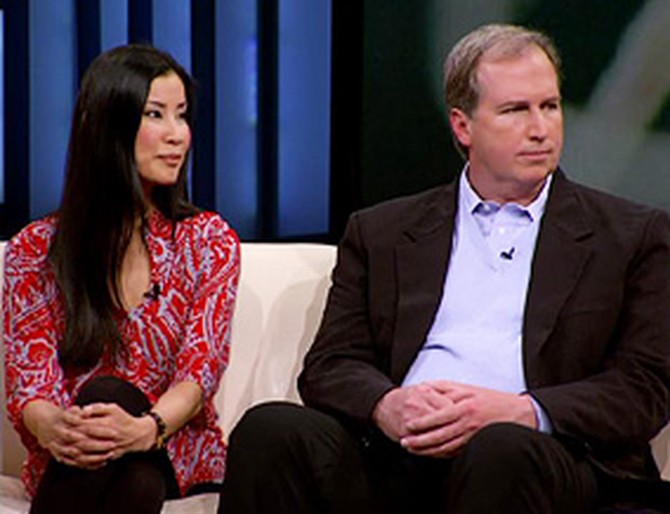
To see what goes on at puppy mills, Lisa Ling brings a hidden camera and joins Bill on a tour of puppy mills in Pennsylvania. According to The Humane Society of the United States, there may be as many as 10,000 puppy mills operating across the United States.
Lisa and Bill also visit two pet stores. Many of the dogs born in puppy mills end up in pet stores or sold on the Internet. Lisa and Bill want to trace puppies' paperwork back to specific puppy mills. At the first store, they find a cockapoo puppy, and at the second, Labrador retriever puppies.
While the owner of a store they visit denies his dogs come from puppy mills, Bill says most at pet stores do.
"The fact is, what they're doing is not illegal," Lisa says. "But the objective I think here is to raise awareness. People go into the pet stores, and they see these cute little puppies not knowing where they come from and what they go through."
Lisa and Bill also visit two pet stores. Many of the dogs born in puppy mills end up in pet stores or sold on the Internet. Lisa and Bill want to trace puppies' paperwork back to specific puppy mills. At the first store, they find a cockapoo puppy, and at the second, Labrador retriever puppies.
While the owner of a store they visit denies his dogs come from puppy mills, Bill says most at pet stores do.
"The fact is, what they're doing is not illegal," Lisa says. "But the objective I think here is to raise awareness. People go into the pet stores, and they see these cute little puppies not knowing where they come from and what they go through."
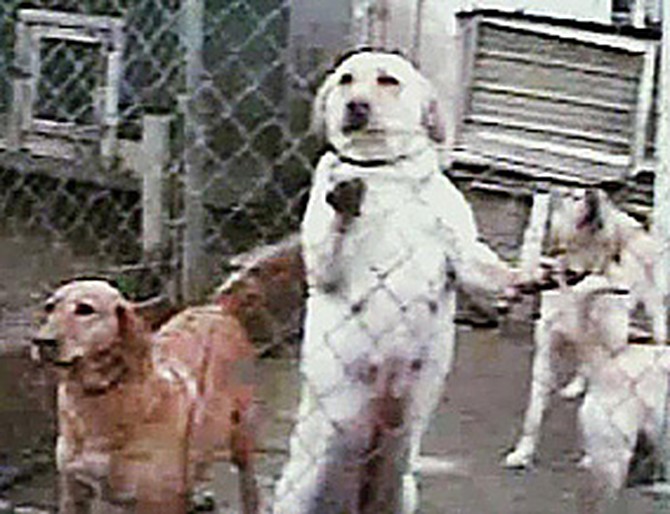
Lisa and Bill spend the next two days tracing the pet store puppies back to their breeders. Bill has fostered relationships with hundreds of breeders across Pennsylvania. He asks them to give him the dogs they no longer want or, worse, the ones they're planning to kill. Bill says these breeders most often want to get rid of older females and younger males. Breeders only need one or two male dogs to breed with every 20 fertile females, so young female dogs are valuable in puppy mills.
Lisa and Bill head to the breeder where the black cockapoo was born. The breeder tells them its mother is one of the dogs in cages outside. Lisa and Bill then followed the breeder into a building full of cramped wooden crates stuffed with dogs. "The spaces are so small, the mothers are stepping all over their babies," Lisa says. Bill says he thinks many of these dogs have never walked in the grass though they live on a 60-acre property.
Visiting the home of the Labrador retriever puppies, Lisa and Bill find the lab puppies' mother in a small, mud-filled pen. Her teats are swollen—Bill says this is evidence she's had many litters of puppies.
Lisa and Bill head to the breeder where the black cockapoo was born. The breeder tells them its mother is one of the dogs in cages outside. Lisa and Bill then followed the breeder into a building full of cramped wooden crates stuffed with dogs. "The spaces are so small, the mothers are stepping all over their babies," Lisa says. Bill says he thinks many of these dogs have never walked in the grass though they live on a 60-acre property.
Visiting the home of the Labrador retriever puppies, Lisa and Bill find the lab puppies' mother in a small, mud-filled pen. Her teats are swollen—Bill says this is evidence she's had many litters of puppies.
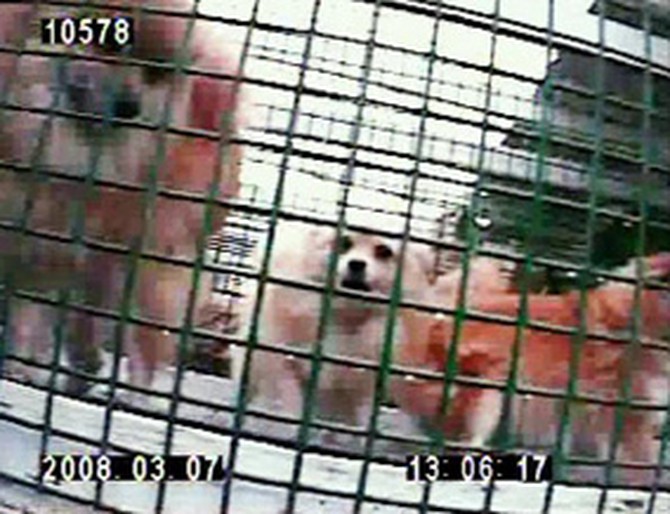
Lisa and Bill continue on to see other nearby puppy mills. In one, they find 30 to 40 dogs in wire-floored rabbit cages stacked to the ceiling in a room that reeks of urine and feces.
Before they go to one breeder's property, Bill warns Lisa about what she may see. "It's probably the worst place I've ever been to in my life. He has dogs running on wheels in fan casings," Bill says. The contraptions look like big gerbil wheels. "[The breeder] claims that it's good for them because they get exercise," Bill says.
That breeder wouldn't let them see his dogs, but Lisa and Bill saw two dead animals on the property.
At a third breeder's facility, Lisa and Bill see outdoor cages that house scores of Pomeranians. Bill tells Lisa that not only have those dogs probably never been out of those small cages, it's likely that they remain outside even in bad weather and could die from exposure.
Before they go to one breeder's property, Bill warns Lisa about what she may see. "It's probably the worst place I've ever been to in my life. He has dogs running on wheels in fan casings," Bill says. The contraptions look like big gerbil wheels. "[The breeder] claims that it's good for them because they get exercise," Bill says.
That breeder wouldn't let them see his dogs, but Lisa and Bill saw two dead animals on the property.
At a third breeder's facility, Lisa and Bill see outdoor cages that house scores of Pomeranians. Bill tells Lisa that not only have those dogs probably never been out of those small cages, it's likely that they remain outside even in bad weather and could die from exposure.
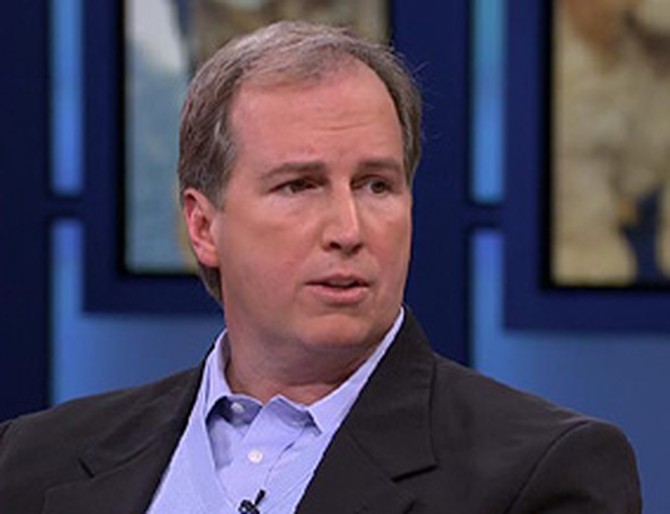
All in all, Bill rescues dozens of dogs as he and Lisa visit puppy mill after puppy mill. Lisa says seeing the way the animals live was haunting. "While I feel relieved about those 39, there are hundreds that we just saw that will remain in cages for the rest of their lives," Lisa says.
Bill says many breeders call him to see if he wants to pick up unwanted dogs. "We form relationships with some of these people, and they're actually the good breeders because they give us the dogs," he says. "A number of times they'll call us and give us 45 minutes to an hour to come out and pick up a dog before they shoot it when they no longer want it. It's always amazing to me when I go out to pick up a dog, they've had the dog eight or nine years and it doesn't have a name. It's never been out of the hutch. It doesn't know how to walk. I have to carry it to the car. It's heartbreaking."
Lisa says one reason puppy mill owners keep their dogs in such conditions is cultural. "They don't regard dogs in the same way that others may. They believe man is to dominate animals," she says. "A number of them didn't seem like they realized that what they were doing was inhumane because in their culture ... that is what they're supposed to be. And the fact is, there is a market for puppies in America."
Bill says he's asked the breeders who own puppy mills why they treat the dogs so badly. "They think that we're fools when we pick the dogs up," he says. "I just went back to one of the mills, and they were asking me about the cocker spaniel we pulled out. ... And I said, 'Well, she's fine. She's walking around the house and everything.' And he said, 'You let that dog walk around the house, where the people in your family live?' And I said, 'Yes, we do.' He just couldn't get over it. It's a different mentality. [Dogs] are considered agricultural products. They're like an ear of corn."
We were contacted by the American Kennel Club and here is what they'd like to say: "AKC's member clubs are comprised of people who dedicate their lives—emotionally and financially—to improving their breeds and to producing healthy, happy dogs. We encourage your viewers to find a responsible breeder."
Bill says many breeders call him to see if he wants to pick up unwanted dogs. "We form relationships with some of these people, and they're actually the good breeders because they give us the dogs," he says. "A number of times they'll call us and give us 45 minutes to an hour to come out and pick up a dog before they shoot it when they no longer want it. It's always amazing to me when I go out to pick up a dog, they've had the dog eight or nine years and it doesn't have a name. It's never been out of the hutch. It doesn't know how to walk. I have to carry it to the car. It's heartbreaking."
Lisa says one reason puppy mill owners keep their dogs in such conditions is cultural. "They don't regard dogs in the same way that others may. They believe man is to dominate animals," she says. "A number of them didn't seem like they realized that what they were doing was inhumane because in their culture ... that is what they're supposed to be. And the fact is, there is a market for puppies in America."
Bill says he's asked the breeders who own puppy mills why they treat the dogs so badly. "They think that we're fools when we pick the dogs up," he says. "I just went back to one of the mills, and they were asking me about the cocker spaniel we pulled out. ... And I said, 'Well, she's fine. She's walking around the house and everything.' And he said, 'You let that dog walk around the house, where the people in your family live?' And I said, 'Yes, we do.' He just couldn't get over it. It's a different mentality. [Dogs] are considered agricultural products. They're like an ear of corn."
We were contacted by the American Kennel Club and here is what they'd like to say: "AKC's member clubs are comprised of people who dedicate their lives—emotionally and financially—to improving their breeds and to producing healthy, happy dogs. We encourage your viewers to find a responsible breeder."
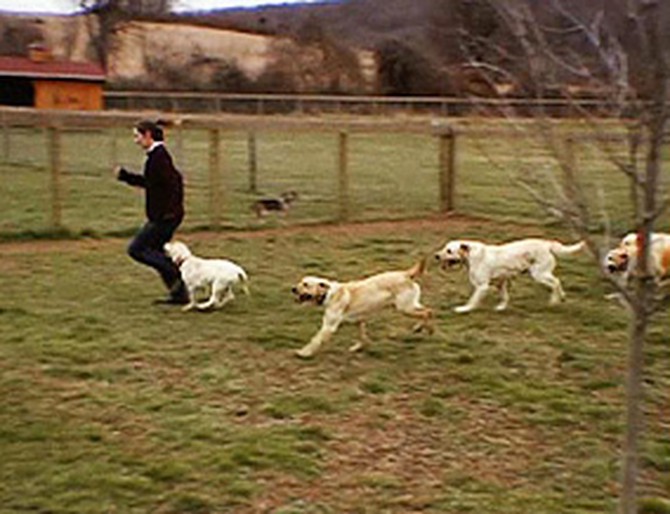
The morning after their rescue mission, Lisa returned to Main Line Animal Rescue to see what the team of volunteers was doing for the new dogs—and the dozens of other neglected or abandoned dogs, cats and rabbits in their care.
Each rescued dog has an appointment with a veterinarian, which is often the first medical care they've gotten in their lives. They also experience two more firsts—their first bath and first grooming. "[We] try to get them cleaned up because they smell really, really horrible," Bill says.
For some dogs, the medical care is urgent. Some have mammary tumors caused by years of nursing and overbreeding. Bill estimates that one cocker spaniel could have given birth to as many as 140 puppies.
Before they were rescued, many of these dogs spent their entire lives in wire cages and had trouble walking on the ground once they were out. Some had their vocal chords damaged by a pipe in order to keep them from barking. Others were completely filthy, with their coats overgrown and soaked in urine.
Each rescued dog has an appointment with a veterinarian, which is often the first medical care they've gotten in their lives. They also experience two more firsts—their first bath and first grooming. "[We] try to get them cleaned up because they smell really, really horrible," Bill says.
For some dogs, the medical care is urgent. Some have mammary tumors caused by years of nursing and overbreeding. Bill estimates that one cocker spaniel could have given birth to as many as 140 puppies.
Before they were rescued, many of these dogs spent their entire lives in wire cages and had trouble walking on the ground once they were out. Some had their vocal chords damaged by a pipe in order to keep them from barking. Others were completely filthy, with their coats overgrown and soaked in urine.
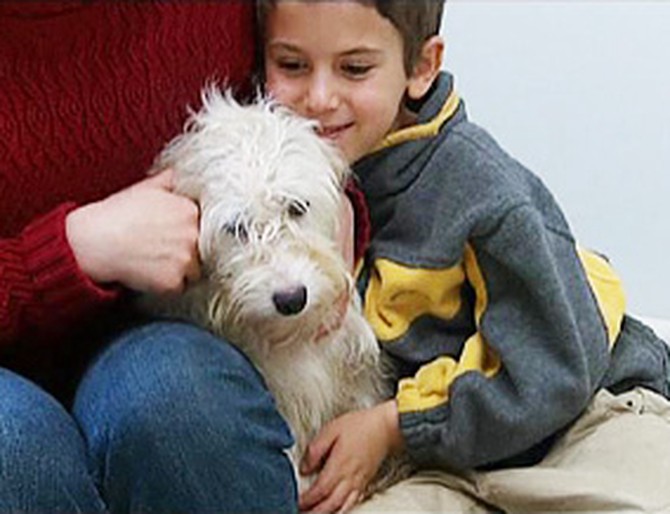
Despite the inhumane conditions the dogs lived in before their rescue, Bill says they usually start to show signs of rehabilitation in about two weeks. The first indication they're coming around is when their tails start wagging, he says.
Bill says Main Line Animal Rescue has rescued approximately 7,000 to 8,000 animals—about 5,000 of those from puppy mills. Their mission is to ultimately place each rescued animal in a loving family, and they are remarkably successful. "We have one of the highest placement rates in the country," Bill says. "We place about 99 percent of the animals we take in because we have a really good trainer who comes and works with us. We actually have something called a 'shy dog' class where we do massage therapy on them and everything else. It's great."
After his rehabilitation, Jake (pictured above) is finally ready to go home with his new family.
Bill says Main Line Animal Rescue has rescued approximately 7,000 to 8,000 animals—about 5,000 of those from puppy mills. Their mission is to ultimately place each rescued animal in a loving family, and they are remarkably successful. "We have one of the highest placement rates in the country," Bill says. "We place about 99 percent of the animals we take in because we have a really good trainer who comes and works with us. We actually have something called a 'shy dog' class where we do massage therapy on them and everything else. It's great."
After his rehabilitation, Jake (pictured above) is finally ready to go home with his new family.
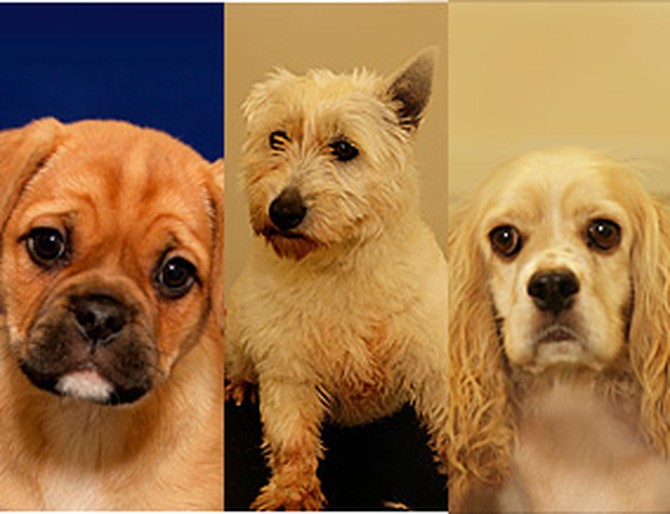
Weeks later, the rescued dogs are steadily making progress. "They're doing extremely well," Bill says.
Even if they've been living in one place for years, most of the dogs that come from puppy mills have never been named. That's one of the first things Bill and the volunteers at Main Line Animal Rescue do.
Bill says several of the dogs he and Lisa rescued were named in honor of their appearance on The Oprah Winfrey Show. "We have a 'Gayle' and we have an 'Oprah' and we have a 'Stedman,'" he says.
"Gayle" (pictured, on the right) is a female cocker, "Stedman" (middle) is a puppy with cauliflower ear, and "Oprah" (left) is a pug with a white chin. "Oh, my God, she has my eyes!" Oprah says.
Even if they've been living in one place for years, most of the dogs that come from puppy mills have never been named. That's one of the first things Bill and the volunteers at Main Line Animal Rescue do.
Bill says several of the dogs he and Lisa rescued were named in honor of their appearance on The Oprah Winfrey Show. "We have a 'Gayle' and we have an 'Oprah' and we have a 'Stedman,'" he says.
"Gayle" (pictured, on the right) is a female cocker, "Stedman" (middle) is a puppy with cauliflower ear, and "Oprah" (left) is a pug with a white chin. "Oh, my God, she has my eyes!" Oprah says.
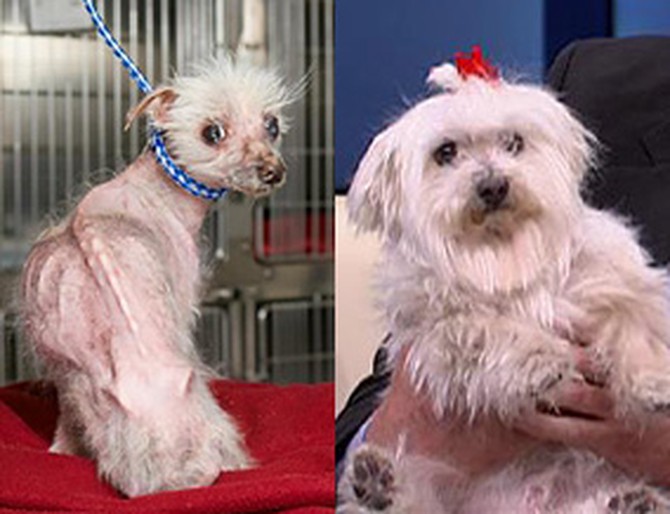
Over the years, Bill says he's definitely taken some of his work home with him—he has 10 dogs! At one point, Bill says he had 12, a bunch he affectionately called the "dirty dozen."
Bill says he usually keeps the dogs who most people would consider "unadoptable." "I have three blind dogs and two dogs with back problems and one dog that was feral in a junkyard," he says.
In January 2007, Bill rescued a Maltese-poodle mix from a breeder. The emaciated puppy had little hair and was close to death. Bill couldn't leave him behind and adopted the little guy, naming him Shrimp.
Today, Shrimp is a happy and healthy member of Bill's pack—and even wears a red bow in his full mane of hair. "Boy, what a makeover!" Oprah says.
Bill says he usually keeps the dogs who most people would consider "unadoptable." "I have three blind dogs and two dogs with back problems and one dog that was feral in a junkyard," he says.
In January 2007, Bill rescued a Maltese-poodle mix from a breeder. The emaciated puppy had little hair and was close to death. Bill couldn't leave him behind and adopted the little guy, naming him Shrimp.
Today, Shrimp is a happy and healthy member of Bill's pack—and even wears a red bow in his full mane of hair. "Boy, what a makeover!" Oprah says.
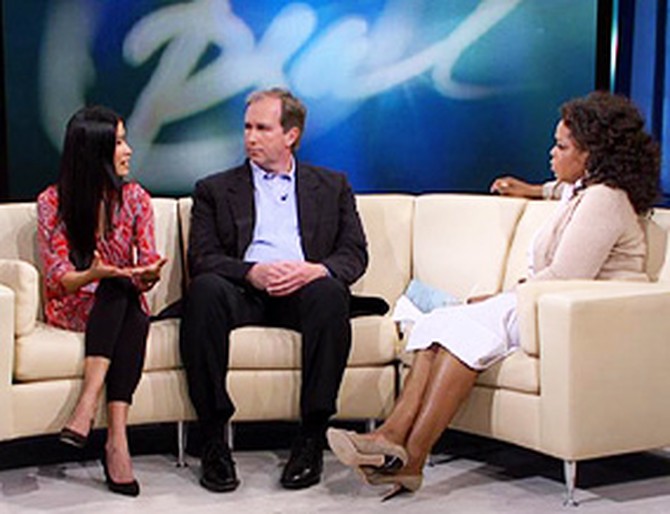
If you are thinking about adopting a new pet, make your first stop the local shelter or animal rescue office. "You can find any kind of dog you want, any age you want, at a shelter or rescue," Oprah says.
Consider these facts when adopting a dog.
Sometimes, what you see isn't always what you get when it comes to that doggie in the window of a pet shop. "You can be deceived when you see these cute puppies in the stores," Lisa says.
If you are looking for a specific breed of dog, Bill says you're likely to find one at a rescue. "A third to 50 percent of the animals in shelters, depending on the location, are purebred dogs," Bill says. "The rest are great designer mixes." Bill says there are also breed-specific rescues throughout the country.
What you need to know about animal shelters and finding responsible breeders.
For people who would still like to use a breeder, Bill urges you to find one that is responsible. Quality breeders care about the quality of life their dogs will have when they go to their new homes and will often interview you about your home. "One of the things that makes them a responsible breeder is they take their dogs back even if it's six or seven years later," Bill says.
Consider these facts when adopting a dog.
Sometimes, what you see isn't always what you get when it comes to that doggie in the window of a pet shop. "You can be deceived when you see these cute puppies in the stores," Lisa says.
If you are looking for a specific breed of dog, Bill says you're likely to find one at a rescue. "A third to 50 percent of the animals in shelters, depending on the location, are purebred dogs," Bill says. "The rest are great designer mixes." Bill says there are also breed-specific rescues throughout the country.
What you need to know about animal shelters and finding responsible breeders.
For people who would still like to use a breeder, Bill urges you to find one that is responsible. Quality breeders care about the quality of life their dogs will have when they go to their new homes and will often interview you about your home. "One of the things that makes them a responsible breeder is they take their dogs back even if it's six or seven years later," Bill says.
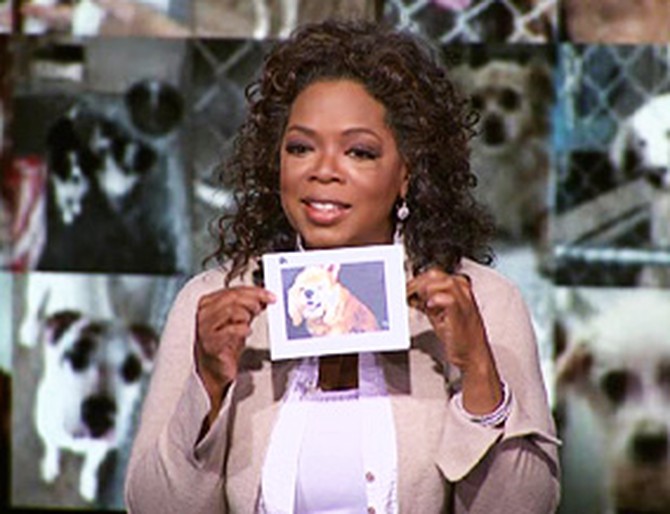
One of Oprah's favorite Christmas gifts last year came from a neighbor who made a donation in Oprah's name to a no-kill shelter called The Lange Foundation. Oprah says she wasn't aware of the gift until she opened a very special Christmas card—"written" by the dog saved by that specific donation. That dog was Salina, a blind cocker spaniel who was close to being put down at an overcrowded animal shelter in Los Angeles.
Here is an excerpt of Salina's letter:
"One morning last week there was great excitement. ... One of the dogs had heard an officer say that someone from Lange Foundation was coming to choose a dog in your honor. I shared in the excitement, even though I knew the dog chosen would not be me. I was old and I was blind. I'd lived for many years in the yard of my owner's home. They never paid much attention to me. I did have my own doghouse, and that is where I spent most of my life, especially when I could no longer see.
"When the foundation arrived, I tried to look my best as I knew it was my fifth day at the pound—my final day. The lady slowly walked up and down the aisles. I could sense that she was sad, and I heard her say to the kennel man, 'I wish I could take all of them.' She passed by my crowded dog run for the third time, and then she stopped and said, 'I think I'll take that one ... I'll take the blind one.'"
"What a great gift, and I was so moved by it," Oprah says. "I got this card, I went and wrote this [organization] a $10,000 check immediately."
Here is an excerpt of Salina's letter:
"One morning last week there was great excitement. ... One of the dogs had heard an officer say that someone from Lange Foundation was coming to choose a dog in your honor. I shared in the excitement, even though I knew the dog chosen would not be me. I was old and I was blind. I'd lived for many years in the yard of my owner's home. They never paid much attention to me. I did have my own doghouse, and that is where I spent most of my life, especially when I could no longer see.
"When the foundation arrived, I tried to look my best as I knew it was my fifth day at the pound—my final day. The lady slowly walked up and down the aisles. I could sense that she was sad, and I heard her say to the kennel man, 'I wish I could take all of them.' She passed by my crowded dog run for the third time, and then she stopped and said, 'I think I'll take that one ... I'll take the blind one.'"
"What a great gift, and I was so moved by it," Oprah says. "I got this card, I went and wrote this [organization] a $10,000 check immediately."
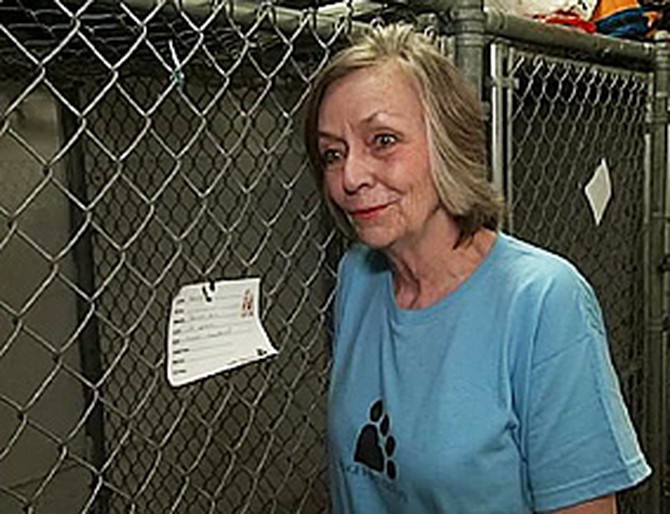
The Lange Foundation was founded in 1993 by Jillian Lange, a woman who turned her passion for animals into her life's work. At least twice a week, Jillian visits Los Angeles's animal shelters to rescue dogs and cats that are unlikely to be adopted. Her mission is to save as many animals as possible before their time runs out. "I know that saving one dog is not saving the world, but it sure makes a heck of a difference in that one dog's life," Jillian says.
During a typical day Jillian drives out to shelters and picks animals as she can—including dogs who have been disfigured or have expensive medical needs. "When I get in the car and leave here, all I do is think about the ones left behind," Jillian says.
After rescuing the animals, Jillian brings them to her no-kill shelter, which has placed 17,000-18,000 animals in loving homes over the years.
During a typical day Jillian drives out to shelters and picks animals as she can—including dogs who have been disfigured or have expensive medical needs. "When I get in the car and leave here, all I do is think about the ones left behind," Jillian says.
After rescuing the animals, Jillian brings them to her no-kill shelter, which has placed 17,000-18,000 animals in loving homes over the years.
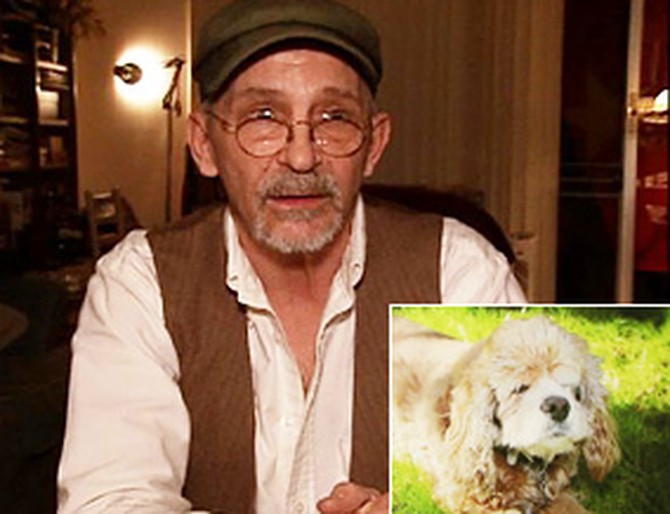
When Jillian received a donation in Oprah's name, she says the decision to rescue Salina was easy. "I knew she liked cocker spaniels. I went down to South Los Angeles Shelter the following day. I saw Salina sitting in the back of a cage, and on her cage card it said 'blind.' I knew I was leaving with that dog," Jillian says. "People are looking for puppies, young dogs, guard dogs. They're not looking for old and blind."
At the same time, a local man named Jack had just lost his beloved cocker spaniel, JoeRobbie. "When JoeRobbie passed away, the last thing I wanted to do was even think of getting another dog," Jack says. "But I saw the article for Lange Foundation. I went online, and one of them that popped up was Salina. She just seemed so helpless."
Salina had found her new home. "We all cross paths for a reason," Jack says.
Sadly, five weeks after Jack adopted Salina, she died of a stroke. Jack still wanted to help another animal and has recently adopted another cocker spaniel named Juno. "We wish you both much happiness," Oprah says.
At the same time, a local man named Jack had just lost his beloved cocker spaniel, JoeRobbie. "When JoeRobbie passed away, the last thing I wanted to do was even think of getting another dog," Jack says. "But I saw the article for Lange Foundation. I went online, and one of them that popped up was Salina. She just seemed so helpless."
Salina had found her new home. "We all cross paths for a reason," Jack says.
Sadly, five weeks after Jack adopted Salina, she died of a stroke. Jack still wanted to help another animal and has recently adopted another cocker spaniel named Juno. "We wish you both much happiness," Oprah says.
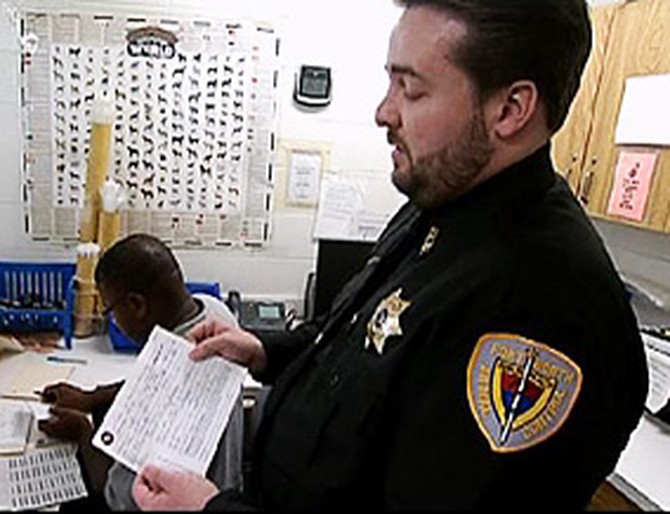
Animal shelters across the country are at or above capacity, leaving little room for new arrivals. Unfortunately, dogs who are not adopted are often euthanized. Tough decisions such as these are made in every city in the country everyday, and the Fort Worth Animal Shelter goes through this difficult procedure nearly 17,000 times a year.
Fort Worth Animal Shelter manager Keane Menefee says they took in 23,000 dogs and cats in 2007—that's about 50 dogs each day. Sadly, only four of those 50 dogs found each day were adopted. "Unfortunately, at times it seems like there's a never-ending line of [animals] coming in, but there's not a never-ending line of people to take them out."
The shelter puts down more than 40 animals each day, and Keane has the difficult task of deciding which animals are euthanized. "The euthanasia decision is almost more difficult than the actual euthanasia process itself," he says. "You're deciding life and death on a daily basis."
Animals can be chosen for a number of reasons, including medical issues, behavior issues and simple shelter capacity issues. When an animal is chosen, a red E is marked on their cage, and they only have one more day to be adopted.
Fort Worth Animal Shelter manager Keane Menefee says they took in 23,000 dogs and cats in 2007—that's about 50 dogs each day. Sadly, only four of those 50 dogs found each day were adopted. "Unfortunately, at times it seems like there's a never-ending line of [animals] coming in, but there's not a never-ending line of people to take them out."
The shelter puts down more than 40 animals each day, and Keane has the difficult task of deciding which animals are euthanized. "The euthanasia decision is almost more difficult than the actual euthanasia process itself," he says. "You're deciding life and death on a daily basis."
Animals can be chosen for a number of reasons, including medical issues, behavior issues and simple shelter capacity issues. When an animal is chosen, a red E is marked on their cage, and they only have one more day to be adopted.
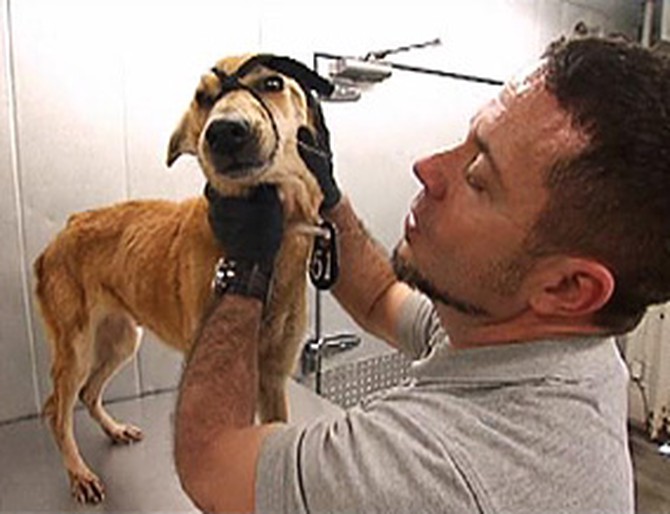
Keane says putting an animal to sleep never gets easier for him. "I have three dogs and two cats, and I have a great love for animals. I feel when I'm putting a dog down that I try to use the same compassion that I have as if I was putting my own animal down," he says.
When it comes time, dogs are individually taken into the euthanasia lab. After the dog is muzzled for safety reasons, Keane injects them with a dosage of Fatal Plus or sodium Phenobarbital, based on their weight. In all, the process takes three to five minutes. The dog's body is put in a body bag and placed inside a freezer until the next morning, when a service will take it to a landfill.
On the day Oprah Show cameras shadowed Keane, 18 dogs were on the list to be euthanized. But three dogs were saved—they were adopted by Harpo staff members working on the show. "They say their minds were changed about wanting brand new puppies," Oprah says.
See more furry members of the Harpo family.
Fort Worth is also working on reducing the number of animals being euthanized. Starting in the summer of 2008, Fort Worth shelter will offer free spaying and neutering to all animals adopted from their facility.
When it comes time, dogs are individually taken into the euthanasia lab. After the dog is muzzled for safety reasons, Keane injects them with a dosage of Fatal Plus or sodium Phenobarbital, based on their weight. In all, the process takes three to five minutes. The dog's body is put in a body bag and placed inside a freezer until the next morning, when a service will take it to a landfill.
On the day Oprah Show cameras shadowed Keane, 18 dogs were on the list to be euthanized. But three dogs were saved—they were adopted by Harpo staff members working on the show. "They say their minds were changed about wanting brand new puppies," Oprah says.
See more furry members of the Harpo family.
Fort Worth is also working on reducing the number of animals being euthanized. Starting in the summer of 2008, Fort Worth shelter will offer free spaying and neutering to all animals adopted from their facility.
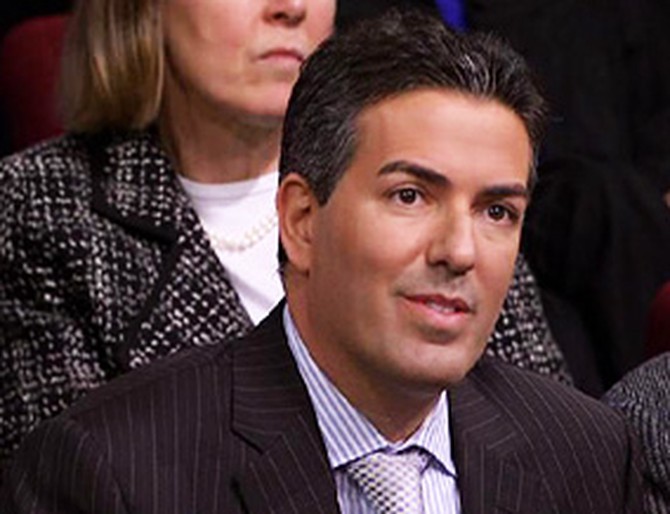
Wayne Pacelle, President and CEO of The Humane Society of the United States, says there is an easy way you can turn your passion into action and help save the lives of animals. "Everybody can spay and neuter their animals. It's better for the animals, and it prevents the needless killing of millions of animals," he says. "Why are we churning out millions of dogs for the pet trade when this is happening in shelters all over America in every community? It doesn't make sense."
Even if you think your dog will never run away or get loose, you can never be too prepared. "A lot of people have misconceptions about spaying and neutering their dogs," Oprah says. "The reason why there's so many dogs that have to go through that [euthanasia process] every day is because we—the people who are supposed to be with the thinking brain—are not using our brains to do what is necessary to protect the animals."
Even if you think your dog will never run away or get loose, you can never be too prepared. "A lot of people have misconceptions about spaying and neutering their dogs," Oprah says. "The reason why there's so many dogs that have to go through that [euthanasia process] every day is because we—the people who are supposed to be with the thinking brain—are not using our brains to do what is necessary to protect the animals."
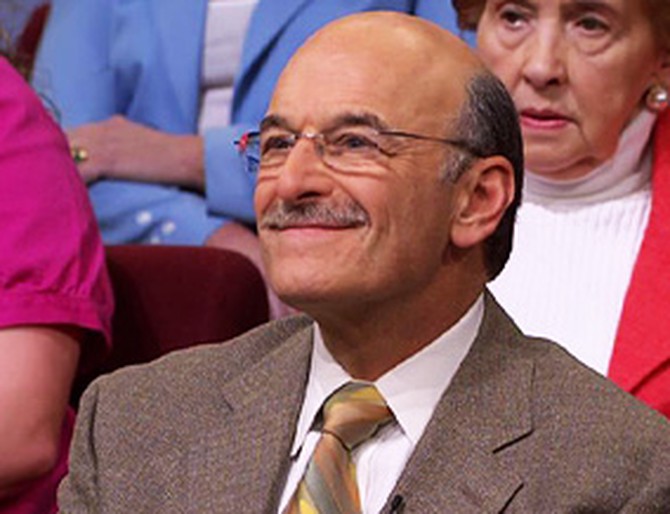
Dr. Shelly Rubin—who treats Oprah's dogs—says spaying or neutering is one of the best things you can do for your pet's health.
For males, Dr. Rubin says neutering can change the dog's behavior for the better. "There's no question that if you neuter a male dog, you're going to do several things. One, you'll reduce prostate cancer and testicular cancer," he says. "Most important, you'll make that dog a really good house pet because it won't be chasing after females in the neighborhood. It listens to you when you speak to it, and it won't be marking urine all over the neighborhood—and your house—in many cases."
For females, Dr. Rubin says it's best to spay them before first heat. "If you spay them before their first heat, and this is scientifically proven, you can reduce the incidence of breast cancer when they're older by somewhere near 90 percent," he says. "So why wouldn't we want to spay and neuter our pets?"
Dr. Rubin says spaying and neutering are very simple procedures. After a quick exam to make sure the animal is healthy enough for surgery, it's given a sedative and anesthesia. The procedure take about 10 to 15 minutes, and the animal can go home that day. "While it costs some money to do it on a private level, there are many, many free or low-cost spay and neuter clinics all over the United States," he says. "That cannot be an excuse for not spaying or neutering your pet."
For males, Dr. Rubin says neutering can change the dog's behavior for the better. "There's no question that if you neuter a male dog, you're going to do several things. One, you'll reduce prostate cancer and testicular cancer," he says. "Most important, you'll make that dog a really good house pet because it won't be chasing after females in the neighborhood. It listens to you when you speak to it, and it won't be marking urine all over the neighborhood—and your house—in many cases."
For females, Dr. Rubin says it's best to spay them before first heat. "If you spay them before their first heat, and this is scientifically proven, you can reduce the incidence of breast cancer when they're older by somewhere near 90 percent," he says. "So why wouldn't we want to spay and neuter our pets?"
Dr. Rubin says spaying and neutering are very simple procedures. After a quick exam to make sure the animal is healthy enough for surgery, it's given a sedative and anesthesia. The procedure take about 10 to 15 minutes, and the animal can go home that day. "While it costs some money to do it on a private level, there are many, many free or low-cost spay and neuter clinics all over the United States," he says. "That cannot be an excuse for not spaying or neutering your pet."
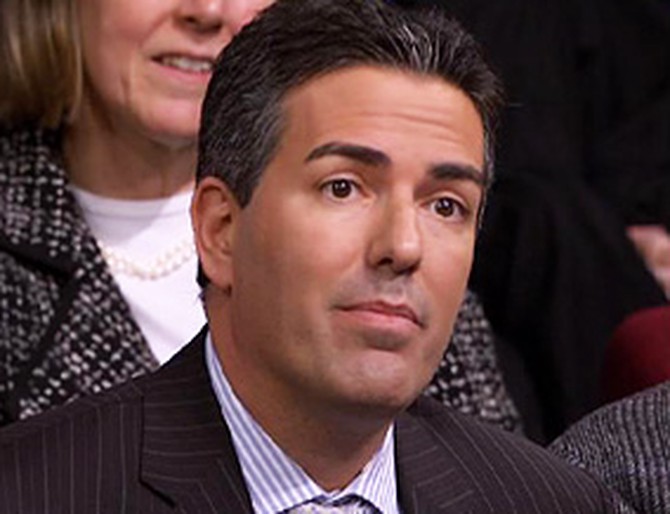
Taking care of animals is a duty that every person should assume. "It's precisely because we are intelligent and powerful that we have responsibilities to these animals. They are helpless before us, and they rely on our good conscience," Wayne says. "The terrible thing is the inhumane treatment of these animals at the puppy mills. It's awful. It's contributing to the larger pet overpopulation crisis, which is resulting in over 4 million dogs and cats being killed every year."
So what can we do to make a difference? "What we can do is we strongly discourage people from going to a pet store to obtain an animal. Go to a shelter. That's got to be your first stop," Wayne says. "A third of the animals are purebreds—go to a breed rescue group. And if you insist on going to a breeder, go visit the breeder, talk to them. See the condition of the animals, especially the breeding females."
So what can we do to make a difference? "What we can do is we strongly discourage people from going to a pet store to obtain an animal. Go to a shelter. That's got to be your first stop," Wayne says. "A third of the animals are purebreds—go to a breed rescue group. And if you insist on going to a breeder, go visit the breeder, talk to them. See the condition of the animals, especially the breeding females."
Published 01/01/2006

